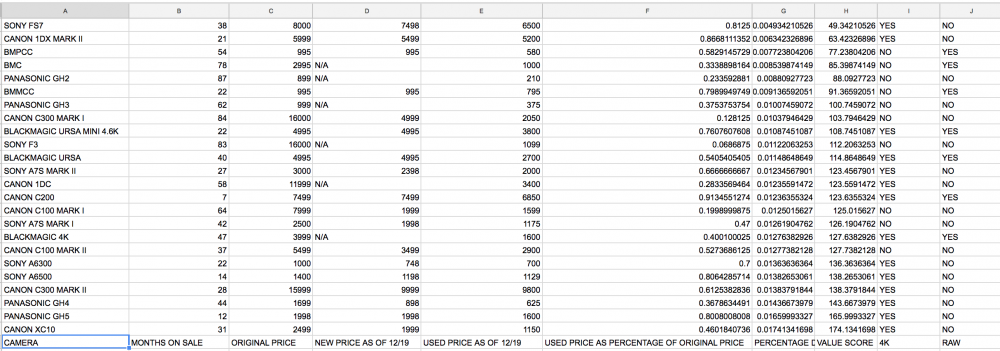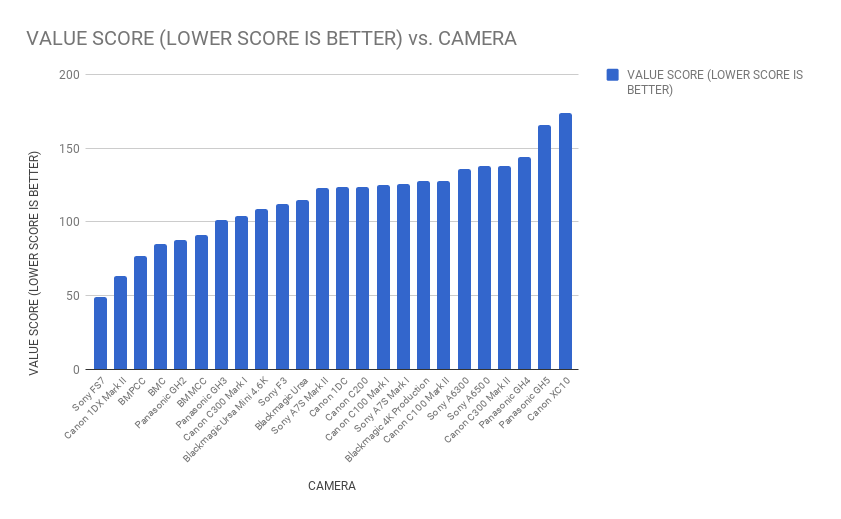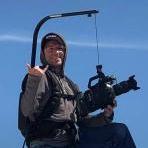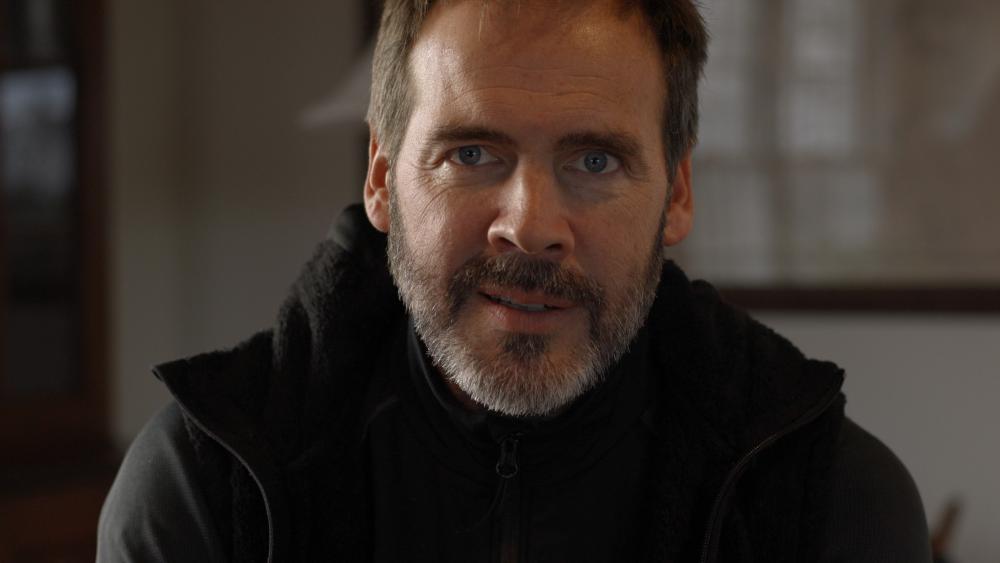Leaderboard
Popular Content
Showing content with the highest reputation on 12/23/2017 in all areas
-
Trying to fix various misunderstandings I experienced while posting my findings about LOG gamma profiles last year, I'm starting at the beginning--Camera RAW. Most of you probably know all this already, but if you have 25 minutes to kill, or just want something to put you to sleep. I've done a video on RAW. I hope to do others, taking someone all the way up from RAW to video LOG. As I do these, I learn a lot too. There is plenty about video LOG that I DO NOT UNDERSTAND. Anyway, here is part one3 points
-
Rolling shutter is not great in 4k compared to 1080p, though I didn't notice it when I was playing with it on my gimbal until you asked the question and I tested specifically for it. You won't want to do any whip pans in 4k on this camera. Which overlays do you need? All the overlays I have on stay on (except for the photo specific ones). Let me know the ones you like and I can have a look. You can't switch between the EVF/LCD during recording, and you still can't change ISO using the front dial. You can't change ISO at all as far as I can tell during recording. You can change the exposure compensation in Auto ISO mode with the front dial if you set the physical Exposure Compensation dial to C. Yes, and it seems to be using the phase detect sensors during AF-C whilst recording video. It's not super smooth, but it doesn't hunt -- you're not going to get super smooth auto focus pulls a la C200, but I suspect it'll be good enough to use on a gimbal. I've still not had heaps of time to test the video aspects, but from what I can see the 4K looks much better than what 1080p gave me previously, but I think there's been some improvements to the 1080p modes as well. Where previously everything looks over-sharpened and the skin looks like plastic, skin now looks more organic and real. It's still very sharp -- too sharp for my tastes -- but the colours are beautiful and the Auto ISO ramps up and down almost as smoothly as my Nikons, so I can definitely see me using it for gimbal work or personal stuff. I'm really looking forward to playing with the Acros simulation in video, I love it in stills and I think it could be really nice to shoot black and white with it. Stills wise the new AF-C algorithms are brilliant, it locks and tracks faster than before. This and 4k alone would've sold me on an X-Pro3, I'm staggered they offered it as a free firmware upgrade! Plus the new tethering options mean one less reason to hang on to so many of my Nikon bodies.2 points
-

X-Pro2 Ver.4.00 4K video firmware released
karin and one other reacted to Andrew Reid for a topic
Just tried it out for the first time It's fucking good. Looks more like A6500 than X-T2 No crop either. Super fine noise grain.2 points -
We all know that cameras are terrible investments. They instantly lose value when you open them and they’re no longer new-in-box, and then they steadily lose value over time. It really only makes sense to think of a camera as an investment if you’re a business buying a camera that will directly impact your ability to get work or if you’re a collector selling rare antiques. Otherwise, you can only plan on losing money on whatever camera that you buy. Buying a camera and expecting it to increase in value is usually really silly. At the same time though, cameras lose values at different rates. Some cameras command used rates very near their launch prices, and other cameras sell for way less than their initial price a year after launch. Importantly though, I think the value of a camera over time can show how forward-looking the company that launched the camera was with that model when it released it. A camera released in 2014 that’s still relevant right now had valuable features in 2014, but is also is still competitive in some way in 2017 (or 2018). I’m thinking that the forward-looking value of a camera can be calculated based on a few points of data: first, how long the camera has been on the market; second, how much the camera cost when it was initially released; and third, how much the camera is selling for used today. In short, I think the difference between what a camera sold for when it was released and what you can buy it for used today can show how competitive the camera is relative to other cameras. So, what I did was to search out data for some of the most commonly used cameras for video and analyze how old they are, how much they sold for when first released, and how much they sell for now. The short version is that I made a Google Sheet and compared the values of cameras over time to see which cameras held their values best over the months they’ve been on the market. The long of it is this: I made ten columns in a Google Sheet. The first column identifies the camera. I chose cameras that are most discussed on the blogs that I frequent, like this one, but I purposely excluded cameras that are also super popular in photography, like the 5D Mark II and III. Their used online value might be less attached to their video functions than others here. The second column is the number of months the camera has been on sale. I used the actual “the camera is available on B&H” date whenever possible. For cameras where the announcement date and the sale date weren’t hugely different, I didn’t make a distinction. For cameras (like some Blackmagic cameras) that were announced and didn’t go on sale until months later, I used the actual “available for sale” date when I could find it. I rounded to the nearest month. The third column is the original price that the camera sold for. The fourth column is the new price as of 12/19/17 (this is mostly for my curiosity and doesn't actually figure into any of the calculations). The fifth column is the used price as of 12/19/17-12/20/17. I used the lowest “Buy-It-Now” price from eBay (US) I could find for each camera, but I only accepted cameras that I would actually purchase (if I was looking for one) based on their being used but totally functional and coming from buyers with decent feedback. The sixth column is the used price as a percentage of the initial new price. For example, a camera that debuted for $2,000 and now sells for $1,000 is selling for 50% of its initial price. The seventh column is the percentage of value lost divided by the number of months the camera has been on the market. I found the percentage of value lost by subtracting the percentage of the new price that the camera sells for used from one. The eighth column is the tiny percentage from the seventh column multiplied by 10,000 to make it more readable. I’m basically creating a “value score,” where the lowest number is the camera that has retained its value the best. The ninth and tenth columns are whether the camera shoots in 4K or raw, respectively, because I wondered whether that would make an obvious difference. This is a graph with each camera’s “value score” (the percentage drop per month multiplied by 10,000), rounded to the nearest one. Essentially, the lower the score, the less value the camera has lost over time, or in other words, the better it’s retained its value relative to the number of months it’s been on the market. Here’s all the original data. So, basically the FS7 has lost very little of its value over time, while the Canon XC10 has lost a ton of its value over time. Most cameras fall in the middle range. Interestingly, every major company has a camera in the top five, and every major company also has a camera in the bottom five. Interestingly, 1080p and 2.5K cameras do pretty well by these calculations. The BMPCC, BMC, Panasonic GH2, BMMCC, and GH3 have all held their value relatively well, while a lot of 4K cameras have lost value relatively quickly. I wondered whether raw shooting cameras would do better, but I don’t think there’s a strong correlation. I’m sure there’s some complex relationship between resolution, codec strength, lowlight ability, sensor size, marketing, and a million other factors, but I don’t know what it is. Interestingly, it’s also possible that the most popular cameras sell for lower prices relative to their new prices because so many people have bought them and used supply is high when those customers decide to move on to new cameras. However each camera has maintained its value, I think the cameras with low scores were (are) futuristic in some way. They have to be to still be relevant today, or to have still been relevant so recently (in the case of the GH2). There’s a lot of limitations to my analysis. It’s mostly for fun and to drive discussion. First, the eBay prices are a tiny sample over two days. I’ve seen cameras go for a lot lower than the prices listed here. I saw a BMMCC go for $550 a few days ago, but when I actually did the analysis the lowest price I could find was $800. That’s a substantial change, but I wanted to take all the prices from one window of time. Second, I don’t think eBay is (usually) actually the lowest price source for buying a camera used. The cheapest BMPCC I could find is $580, but there’s one on BMCUser now that’s less and comes with a cage. I’m totally open too to the fact that my math might be less than perfect. I’m not a statistician. I’m just a camera nerd with love for data. Please feel free to point out how I could make it better or if it’s all not valid at all. Or, please let me know if I’ve missed major dates, miscalculated months, or mistook the initial price. I threw this together pretty quickly out of curiosity and can fix it. I’m not picking on any particular camera. I’ve almost bought an XC10 a few times. At the end of the day, whatever camera you buy needs to fit your needs, and the idea that it might retain value isn’t really important if it’s meeting those needs. But, some cameras hit the market and are so cutting edge that they hang on for years. My goal was to look backward with data to see which cameras those were.1 point
-

Tell Santa! All I want for Christmas is...
mkabi reacted to EthanAlexander for a topic
I know what we all really want is an Alexa 65 and $100 Million to finance our feature, but there's only so much Santa can do in two days...1 point -
Tell Santa! All I want for Christmas is...
IronFilm reacted to Mattias Burling for a topic
Have it. Its the best zoom lens Ive ever used. Such a gem.1 point -

Tell Santa! All I want for Christmas is...
IronFilm reacted to EthanAlexander for a topic
@IronFilm Audio is the only one that hasn't been picked yet... It's up to you to defend the most overlooked part of filmmaking1 point -
I tested @maxotics mirror setup and really like it! By gaff taping the mic on the corner of the evf it turns into a really lightweight setup for people who need to film themselves. Really great!1 point
-

Panasonic GH5 - all is revealed!
Chrille reacted to webrunner5 for a topic
Kind of funny for me to hear Rap music in German! Works fine. I think I would at least wait for this GH5s thingy to see what it is. Might be the best thing since sliced bread for the money? Trouble with the BMPCC is low light and it is not the easiest thing to handle. I sort of like the BMCC better for production. But you are not going to run n gun with it like you sort of can with the BMPCC. Yeah that seems crazy the a Sony a7r II would be noisy?? They are almost as good as the A7s. Yeah not a lot I have seen either that is Cine looking out of a GH5 compared to what you get form a BM product. But it does have a wealth of features in it not many cameras have. I think better LuTs will come out. That Arri LuT on here Sage has looks great for them.1 point -

RAW Starting From The Beginning
maxotics reacted to webrunner5 for a topic
I fell asleep! But to someone who doesn't know a lot about it he is pretty good at explaining it. It does help to know how stuff works to make it work for you.1 point -
Sony A7R III announced with 4K HDR
Don Kotlos reacted to tellure for a topic
Having the ability to toggle in and out of Super35 while maintaining 4K resolution is an awesome feature, especially now that the quality / rolling shutter difference between FF and S35 is much smaller. And finally we can bind it to a custom button. It's basically like having an additional 50% zoom on all your lenses, which is HUGE. I was shooting on the FE 24-70mm 2.8 last month and having an equivalent 24-105mm 2.8 with the touch of a button was awesome. I just hope they eventually allow us to toggle between FF/S35 WHILE recording.. it is such a bummer to have to stop the record, toggle, then resume.1 point -
Yeh i totally get you guys. Im holding off on the a7r iii and iv right now because the sony a18 is right around the corner!1 point
-

Sony A7R III announced with 4K HDR
Don Kotlos reacted to Dave Maze for a topic
But honestly, the rolling shutter performance on the a7Riii is so great I don't know if the S3 will have such good RS performance. Also, you get S35 4k on the a7Riii which the S3 can't natively do without the weird zoom thing Sony does1 point -
Panasonic GH5 10bit vs 8bit
webrunner5 reacted to sam rides a mtb for a topic
Not my footage, but one example:1 point -
1 point
-

Sony A7R III announced with 4K HDR
Dave Maze reacted to Don Kotlos for a topic
I think most of us are holding off the a7r3 for the soon arriving a7s3.1 point -
I'm going to a Sigma shop next week in Warsaw. I will compare the dp3 Quattro to my current portrait set-up Nikon d5500 + voigtlander 58mm nokton, here is the last portrait I've shot with it : I know this is not the same focal (50mm for the sigma), but I want to compare the colors and contrats in a studio environment and see if the sigma can surpass the Nikon bayer + Voigt.1 point
-
Lol Seriously? I hate buying let's say an A7SII right now when we know the III is around the corner. But not buying a camera 2 weeks after release because the next one is coming 2 years after? You will never buy, cause the V is coming 2 years after the IV and so on.1 point
-
Panasonic GH5 10bit vs 8bit
webrunner5 reacted to Simon Shasha for a topic
The GH5 is the first time I am willing to trade dynamic-range for ergonomics. I am absolutely sick of rigging up cameras, if not with external monitors, than with shoulder-rigs and whatnot. For my personal shooting style, the 5-Axis on-sensor IBIS, high-res EVF and LCD, and 10-bit internal, make up for the lack of dynamic-range and usable 12,800ISO (which I wouldn't even use, anyway).1 point







